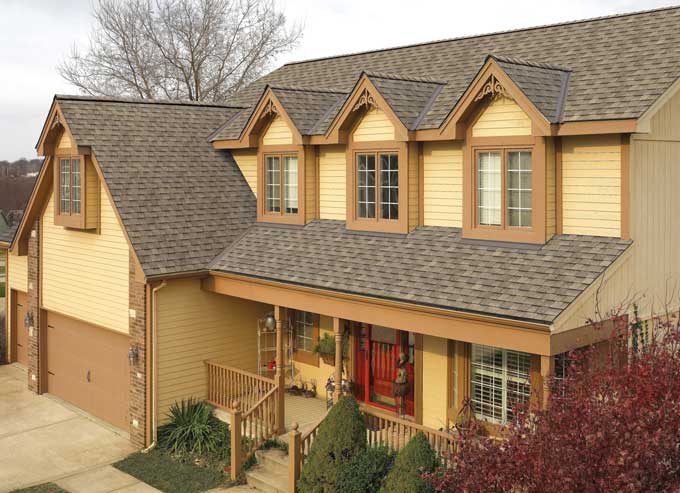 Architectural Asphalt Shingled Home
Architectural Asphalt Shingled Home
How to Visually Inspect Your Roof, Select a Contractor, and Choose a Roofing Material
Most homeowners don’t spend a lot of time thinking about their roof... until there’s a problem. Then suddenly it’s difficult to think about anything else. That’s because there’s no more important factor to living comfortably than the condition of the roof over our heads.A sound, healthy roof provides year-round protection from the scorching sun, soaking rains, strong winds, and heavy accumulations of snow and ice. However, as a roof ages it inevitably begins to fail, and then the entire home is in peril, perhaps not immediately, but eventually.
The first sign of trouble usually starts with some damp attic insulation or a small water stain on the ceiling. Nothing too serious, but if left unchecked these initial warning signs will most certainly lead to serious — and expensive — damage, including rotted rafters and joists, delaminated plywood sheathing, crumbling drywall, soggy insulation, mold and mildew growth, and ruined floors and furnishings. That’s why it’s critically important to replace an aging roof before it fails and causes any damage.
Now, we know that choosing the best new roof for your home can be a daunting task So, we’re here to help by offering a detailed look at the features and benefits of the five most popular roofing materials: asphalt, cedar, plastic composites, metal, and slate. But first, let’s discuss how to tell it’s time for a new roof.
Evaluating Your Roof
Here are some tips and techniques for checking the condition of your roof and to determine if you must replace it. One of the best — and safest — ways to inspect a roof is from the ground using a pair of binoculars. As you slowly scan across the roof, keep an eye out for anything that seems out of the ordinary.For an asphalt- or cedar-shingle roof, check for cracked, missing or badly curled shingles. On a metal roof, look for punctures, large dents, and crushed seams. Plastic-composite shingles are very resilient and crack-resistant but check for any shingles that are missing or misaligned, indicating that they’ve pulled loose and slipped out of position. Slate tiles are extremely durable and long-lasting, but they’re also brittle. Inspect the roof for cracked, missing, misaligned, or badly chipped tiles.
Other trouble spots to look for include:
- Large patches of moss or mildew growth, especially on the north side of the roof or areas that are always in shade
- Damaged, loose or missing metal flashing around chimneys and vent stacks
- More than one layer of roofing
- Noticeable downward dips in the roof between the rafters
By the way, it’s worth mentioning that leaks do occur on young, healthy roofs, although much less often than on older roofs. Water can seep in around ill-fitting flashings, and fallen branches can puncture a roof, creating a place for water to penetrate.
If after inspecting your roof and attic you’re still unsure about the condition of the roof, consult with a roofing contractor. Now let’s discuss the five most popular types of roofing materials.
Asphalt Shingles
Asphalt-based shingles are the most popular style of roof installed, and it’s easy to see why. Asphalt shingles are attractive, affordable, readily available in a wide range of colors, and surprisingly durable.Asphalt shingles are constructed in one of two ways: with an organic base or a fiberglass base. The organic kind cost less and are made by more companies, but fiberglass shingles last longer, are lighter in weight and are much more fire-resistant.
There are three types of asphalt roof shingles: three-tab shingles, architectural shingles, and designer shingles. 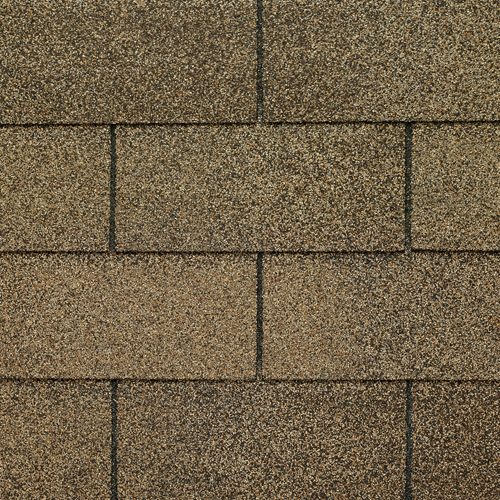 Three-tab shingle Three-tab shingle | Standard three-tab shingles represent a very basic, generic style. Each shingle is a single layer thick, with two narrow slots cut into it to create the three tabs. |
|
| Architectural shingles are the most common roofing application over the last 20 years. They consist of two strips of asphalt roofing, one adhered on top of the other. For this reason, they’re sometimes called laminated or dimensional shingles. The bottom strip is a solid shingle and the top strip is notched with widely spaced, dovetail-shaped tabs. When installed, the laminated construction forms a heavily textured surface with deep shadow lines. Architectural shingles can carry warranties of up to 50 years. | Want to create a truly distinctive and eye-catching roof? Then consider designer asphalt shingles. These specialty shingles come in a wide variety of shapes and profiles to produce unique roofing patterns, such as staggered L-shape notches, repeating diamond layout, and a wavy-line pattern that mimics the lines of traditional mission-style clay tiles.
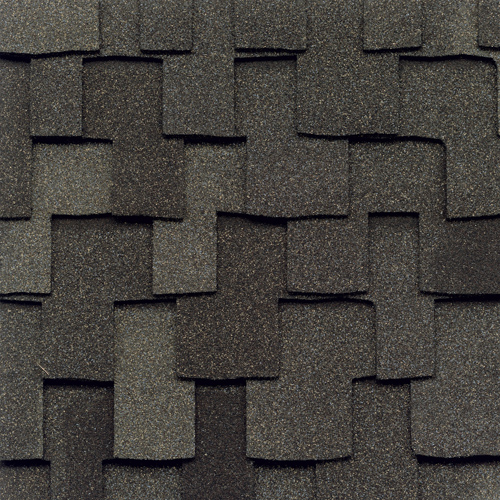 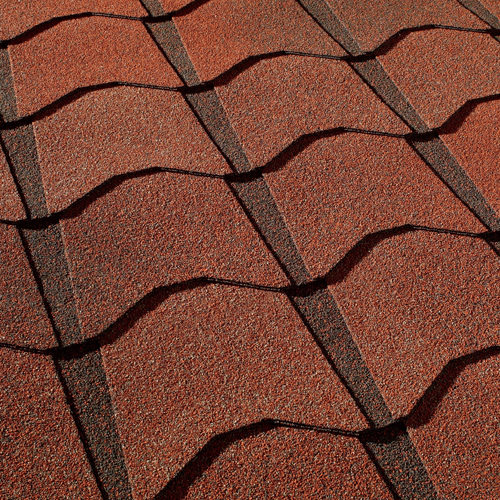 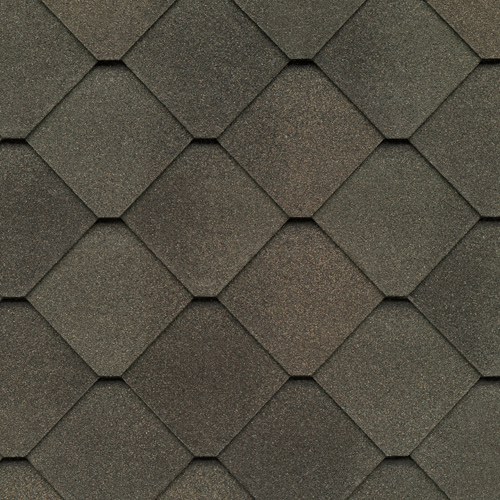 |
| Designer shingles: L-notch (left), faux-clay tile (center), and diamond pattern (right). |
Cedar Shingles and Shakes
Few roofing materials can compare with the natural beauty, color and texture of western red cedar shingles. The shingles are nailed down in overlapping courses, with each succeeding course covering the nails in the previous course below.Red cedar is naturally resistant to rot and wood-boring bugs but offers very little resistance to fire, unless it’s treated with a fire retardant. Cedar shingles are available in several grades. Number 1 Blue Label shingles should be used for roofing, which is a premium-grade shingle that’s perfectly clear (no knots) and cut from all-heartwood for superior decay resistance.
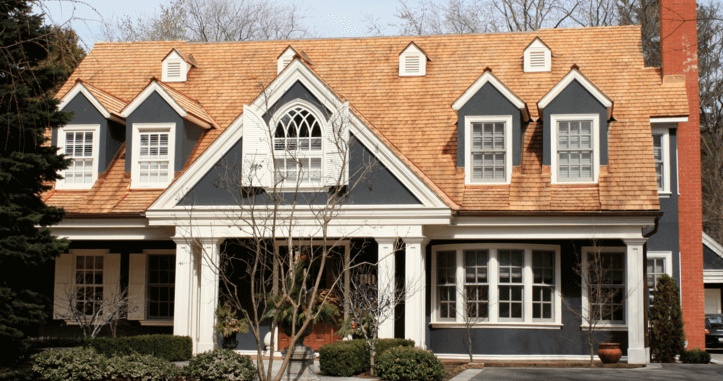
Cedar shakes are similar to shingles, but they’re cut much thicker and rougher, so they have a much more rugged and rustic appearance. To ensure that cedar shingles and shakes last as long as possible, it’s best if they’re nailed over a ventilated underlayment or to spaced sheathing, not directly to the plywood.
The downside of cedar roofing is that it’s expensive to buy and install, it can curl badly, and it only lasts about 20 to 25 years.
Plastic Composites
Plastic-composite shingles represent the newest and most intriguing type of residential roofing. These resilient shingles are made from a polymer that’s similar to hard rubber. They’re rot-proof, weatherproof, fire-resistant, and virtually indestructible. They’re often called faux shingles because they resemble natural slate tiles or cedar shingles or shakes.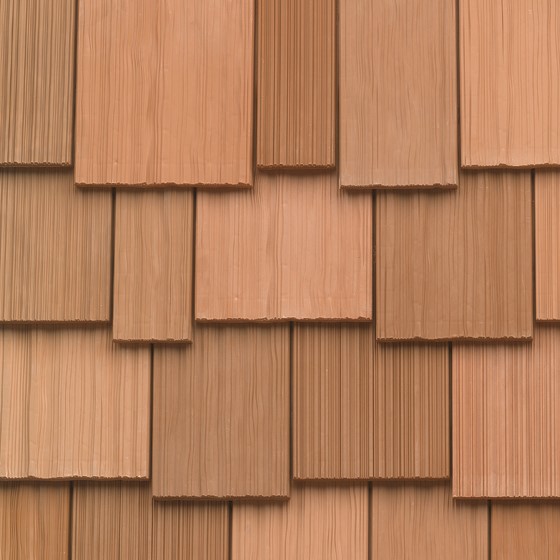
 Plastic-composite roofing is installed similar to other shingles: It’s nailed down to plywood sheathing in overlapping courses. The time, tools, and skill required to install composite shingles are similar to asphalt roofing, but the shingles cost three to four times more.
Plastic-composite roofing is installed similar to other shingles: It’s nailed down to plywood sheathing in overlapping courses. The time, tools, and skill required to install composite shingles are similar to asphalt roofing, but the shingles cost three to four times more.
Metal Roofing
There’s a lot to like about metal roofing: It’s lightweight, durable, extremely fire-resistant, available in dozens of colors, and can withstand very high winds. Most metal roofing is made with a very high percentage of recycled metal, and all metal roofing is 100% recyclable. Plus, nothing sheds snow and ice better than a metal roof. And in summer, a metal roof reflects heat, keeping the house cooler.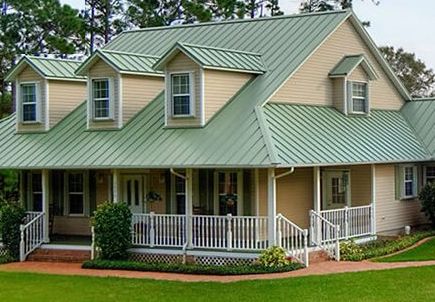 The roofing is made from various metals, including tin, zinc, aluminum, copper, or galvanized steel. And there are a few different styles available, but the most popular by far is called a standing-seam roof. It comes in 12- to 36-in.-wide panels that are long enough to extend from the eaves all the way to the roof peak. Along the edges of the panels are vertical flanges that overlap and interlock to form watertight standing-seam joints. There are also metal roofs that simulate the look of clay tiles and wood shakes.
The roofing is made from various metals, including tin, zinc, aluminum, copper, or galvanized steel. And there are a few different styles available, but the most popular by far is called a standing-seam roof. It comes in 12- to 36-in.-wide panels that are long enough to extend from the eaves all the way to the roof peak. Along the edges of the panels are vertical flanges that overlap and interlock to form watertight standing-seam joints. There are also metal roofs that simulate the look of clay tiles and wood shakes. Now, there are a few drawbacks to metal roofing. First, it can be pretty noisy during heavy rains and hailstorms, though sound-deadening materials installed below the metal panels will help soften the din. The painted panels will fade or chalk over time, leaving behind a dull sheen. And metal roofs will dent if struck by fallen branches, hailstones, or errant golf balls. However, the biggest drawback is the price: metal roofing often costs three to four times more than asphalt shingles.
Slate Tiles
When it comes to elegant, stately roofs, few materials can compete with the natural beauty of slate tiles. Quarried from the earth and cut into smooth shingles (AKA tiles), slate roofs have been proven over many centuries to be an excellent roofing material. It’s attractive, extremely durable, highly weather-resistant, and slate will never rot, curl, or catch fire.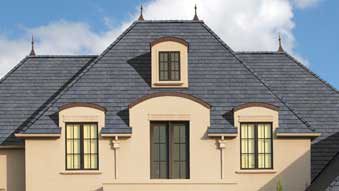
Natural slate represents one of the most beautiful and durable of all roofing materials.
Slate is much heavier than virtually any other roofing material, so if you’re considering a slate roof for your home, be sure to consult with a building engineer or architect to confirm that the roof frame can support the extra weight. Slate is extremely hard, which is partly why it’s so durable. But, that hardness also makes slate brittle. The tiles will crack if struck by a hard object or walked upon. And, as you may have guessed, slate is expensive to buy and to install. In fact, it’s typically the most expensive residential roofing material.
Installation
There’s only one thing more important than choosing the right roofing material, and that’s choosing the right roofing company. No roofing material, no matter how well it’s made or how much it costs, will offer long-term weatherproof protection if it’s improperly installed.Your best bet is to hire a licensed, experienced company after researching reviews and testimonials online.
Also, look for a “certified” contractor, meaning one who’s been trained and certified by a specific roofing manufacturer to install its products. That’s your assurance that the contractor has learned the proper installation and weatherproofing techniques.
Certification has other benefits as well: ongoing training sessions, access to the manufacturer’s technical department, and the ability for the contractor to offer extended warranties to customers.
Lastly, all reputable roofing companies will come out to your home to inspect the condition of the existing roof, discuss new-roofing options, and offer a free written estimate for the project. Follow the advice outlined here, and you’ll be sure to get a great-looking new roof that’ll last well into the future.
Learn more about Comfort's roofing options.
Subscribe to the Comfort Windows & Doors Blog
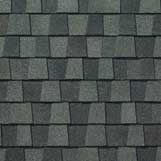


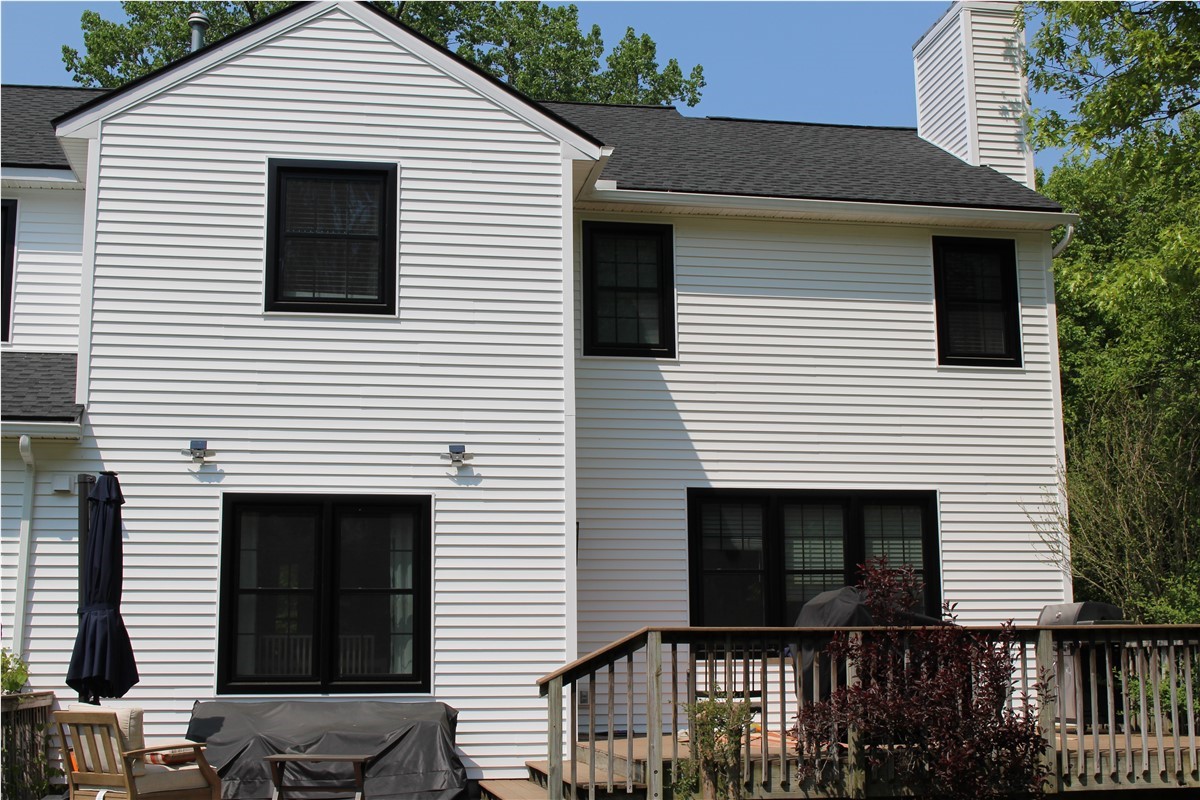
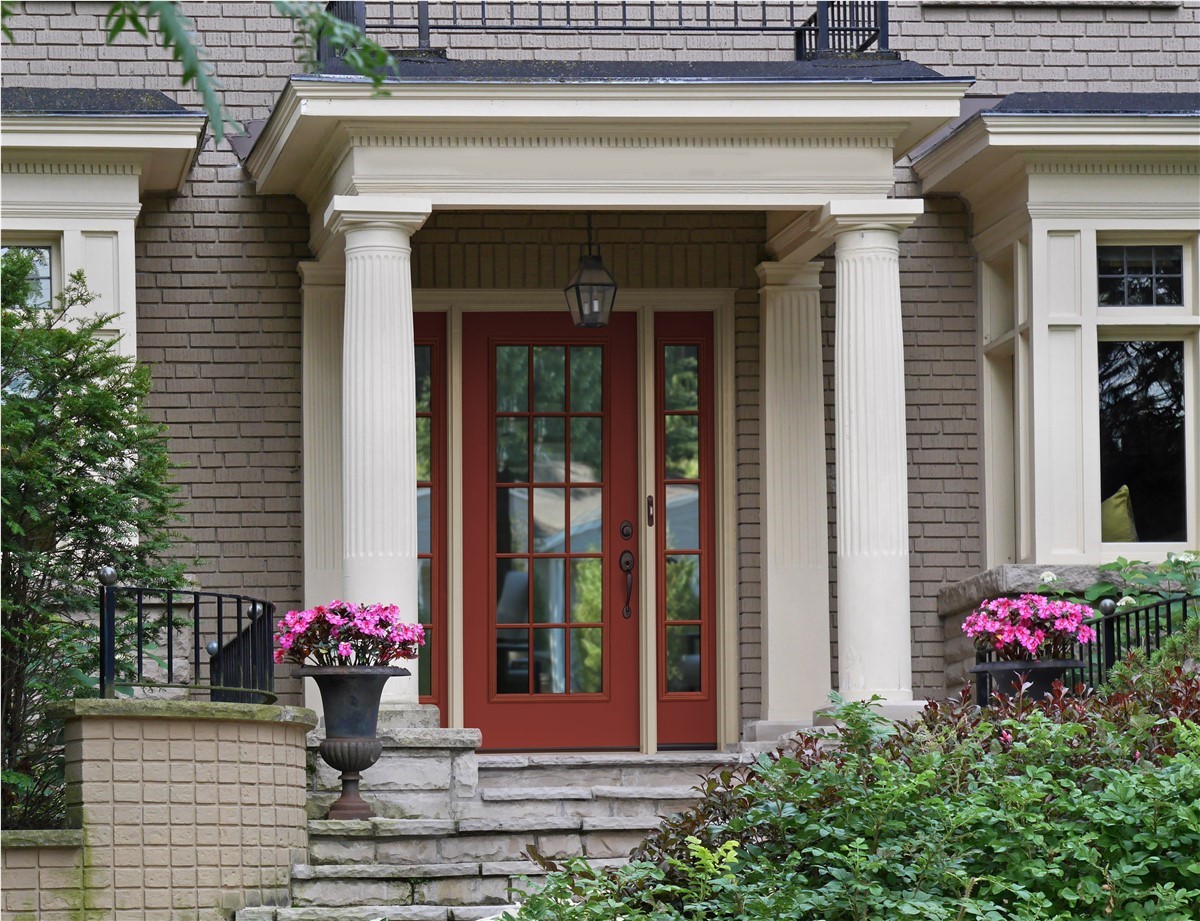

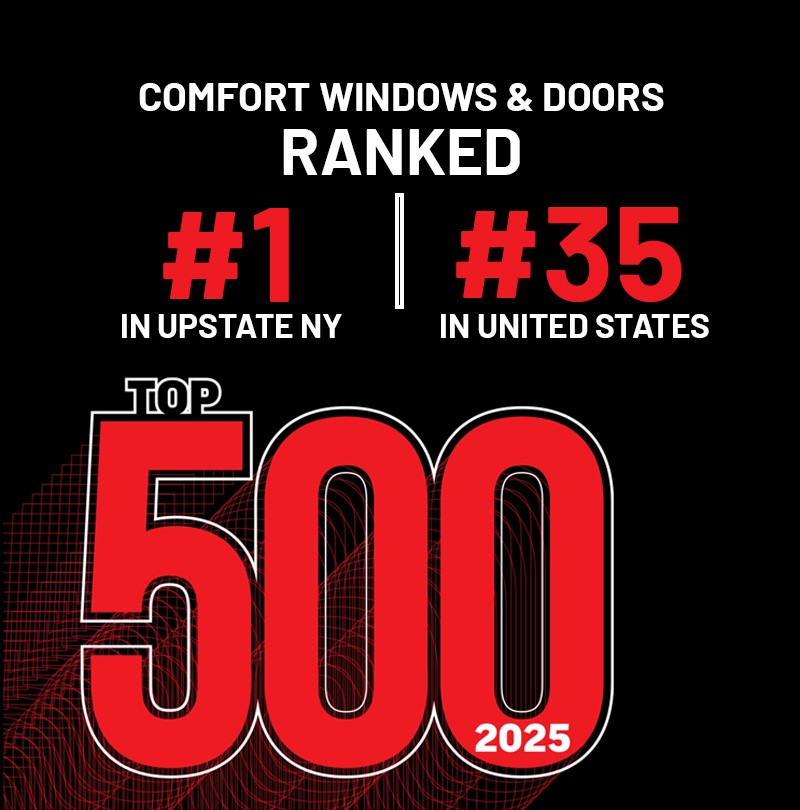


Comments